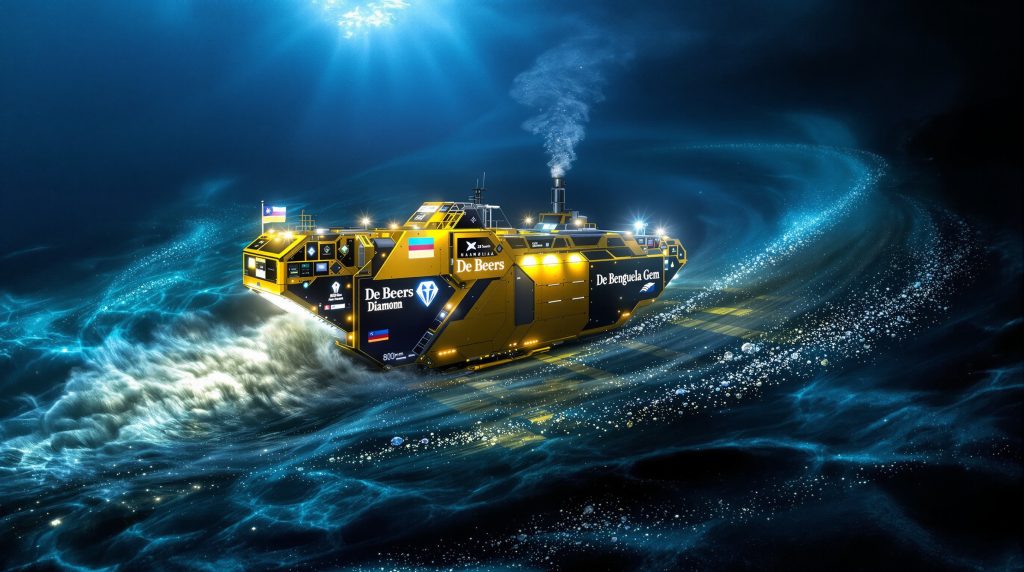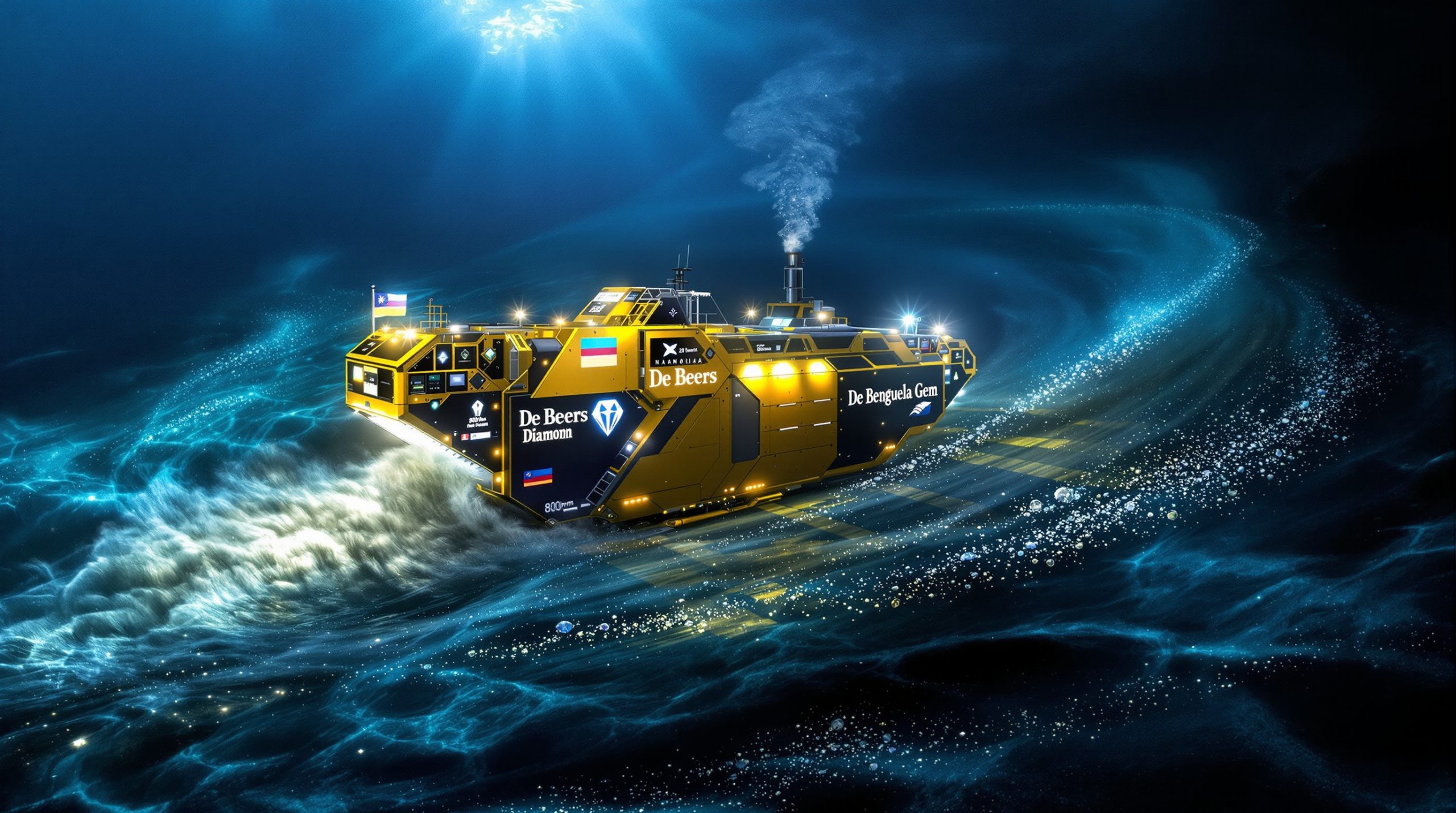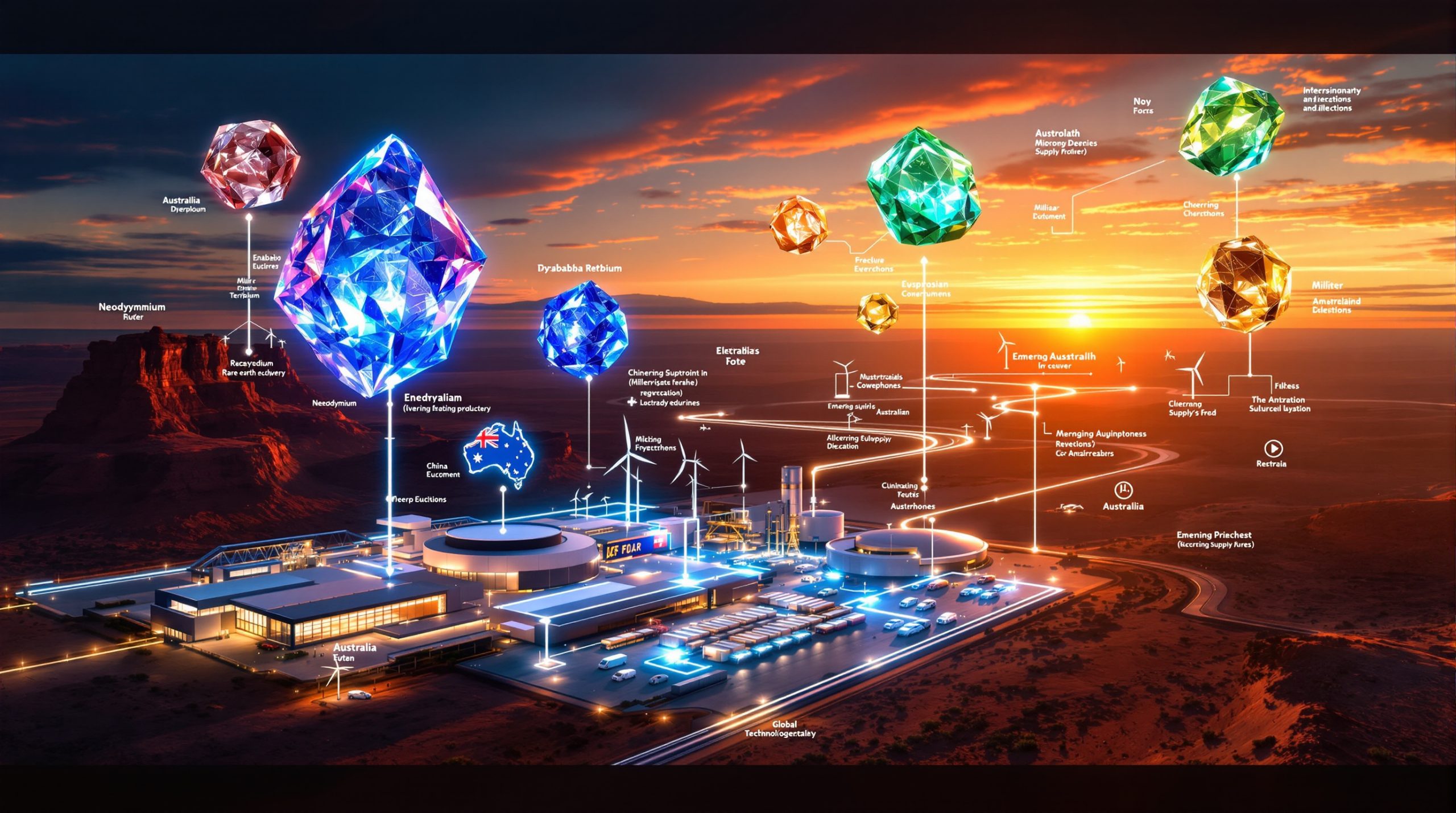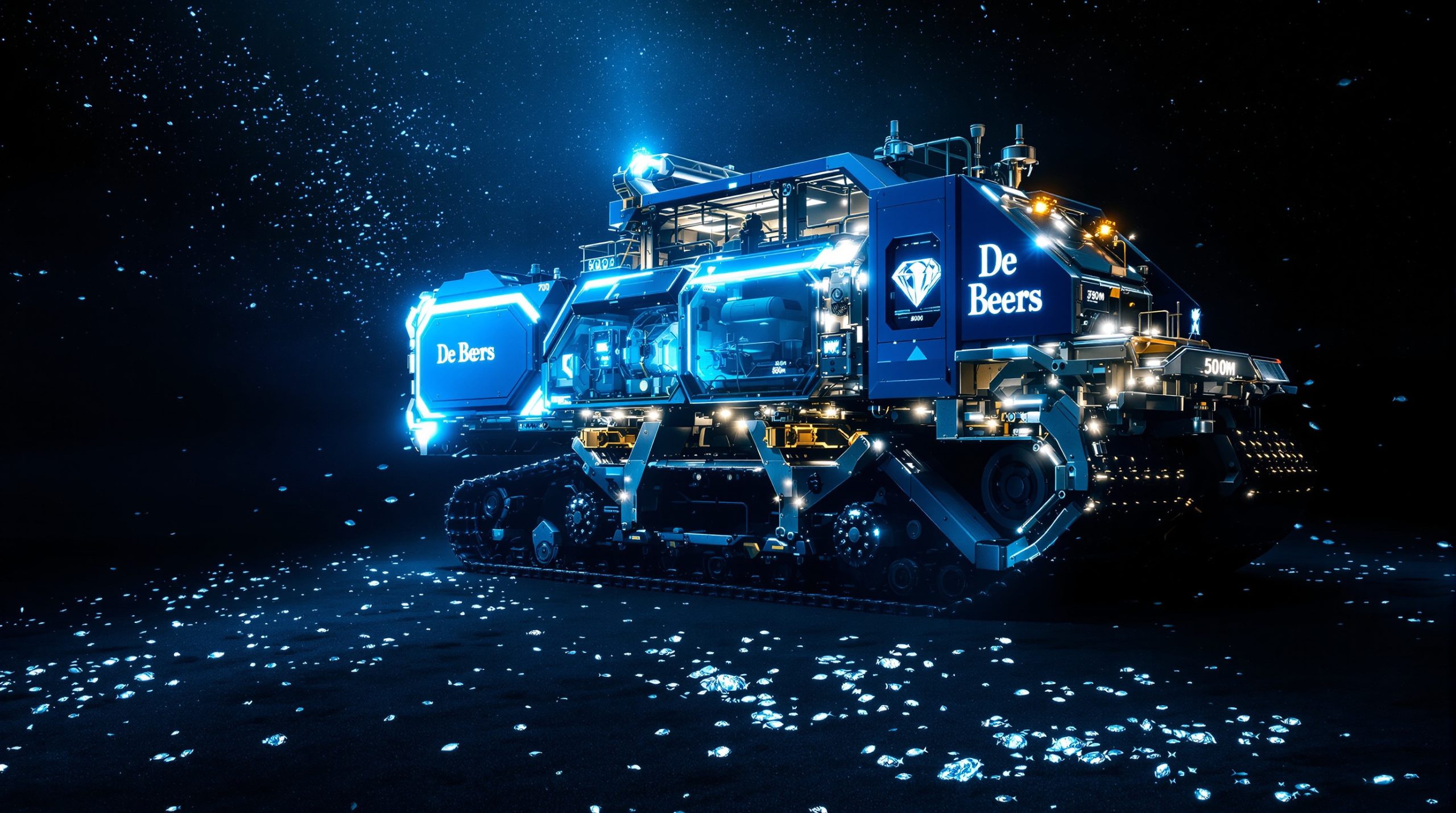Advanced Subsea Diamond Recovery: De Beers' Next Generation Crawler Technology
De Beers Group has unveiled a groundbreaking advancement in marine diamond mining with its next generation subsea crawler technology. After nearly four years of intensive development, this engineering marvel represents a significant leap forward in offshore diamond recovery capabilities. Built on more than two decades of subsea mining expertise, the new crawler delivers unprecedented performance in some of the world's most challenging marine environments.
The technological breakthrough provides a dramatic 20% increase in effective mining rates while improving engineering availability from 82% to 87%. This sophisticated system combines robust construction with cutting-edge technology to maximize diamond recovery while minimizing environmental impact.
The Evolution of Marine Diamond Mining
Marine diamond mining has undergone remarkable transformation since its inception. The latest crawler technology represents the culmination of continuous innovation in subsea resource extraction methods. Unlike traditional land-based mining, marine operations must contend with harsh underwater conditions, variable seafloor terrain, and the challenge of precise resource targeting at depths exceeding 100 meters.
The next generation crawler builds upon previous designs while incorporating significant advancements in automation, material processing, and operational reliability. This evolution enables access to diamond deposits previously considered too difficult or uneconomical to recover. Furthermore, understanding the broader mining industry evolution helps contextualize how marine diamond recovery fits into the global resources sector.
What Makes De Beers' Next Generation Crawler Revolutionary?
The revolutionary nature of the next generation crawler lies in its combination of sheer scale, sophisticated technology, and intelligent design. Weighing an impressive 370 tonnes and measuring 28 meters long by 8 meters high and wide, this underwater behemoth represents a marvel of modern engineering.
One of the most striking features is the crawler's mining arm, which completes a 21-meter arc sweep in just 25 seconds, enabling efficient coverage of the seafloor. Operating at depths between 100-135 meters below sea level, it processes material through an 800mm diameter pipeline—a significant advancement over previous designs.
Technical Specifications and Capabilities
The crawler's technical specifications reveal its extraordinary capabilities:
| Specification | Details |
|---|---|
| Weight | 370 tonnes |
| Dimensions | 28 meters long, 8 meters high and wide |
| Mining Arm Sweep | 21-meter arc completed in 25 seconds |
| Operating Depth | 100-135 meters below sea level |
| Pipeline Diameter | 800 mm |
| Materials Processed | Seawater, sand, gravel, and diamond-bearing material |
| Vessel Integration | Designed for Debmarine Namibia's flagship vessel, Benguela Gem |
These specifications enable the crawler to function effectively in demanding subsea environments while maintaining high production rates and operational reliability.
Advanced Engineering Innovations
What truly sets this technology apart are its engineering innovations that address longstanding challenges in marine mining operations.
Automated Track Tensioning System
One of the most significant breakthroughs is the hydraulic track tensioning system that automatically adjusts to changing seafloor conditions. This intelligent system:
- Reduces track chain wear through dynamic tension adjustment
- Extends component lifespan by minimizing mechanical stress
- Improves gearbox torque efficiency through optimized tension settings
- Maintains optimal traction across variable terrain types
According to mining system specialist Sebastian "Bas" van der Laer, this innovation significantly contributes to pushing engineering availability from 82% to 87%, directly supporting increased production capacity.
Enhanced Sonar Imaging Technology
The crawler incorporates sophisticated forward-looking sonar systems that provide operators with detailed real-time images of the seabed. This advanced imaging enables:
- Precise navigation across complex ocean floor topography
- Identification of diamond-rich deposits with greater accuracy
- Recovery operations down to the footwall, maximizing resource extraction
- Optimized extraction patterns that increase yield while minimizing disturbance
This visual mapping capability represents a significant advancement over previous generation systems, allowing operators to target resources with unprecedented precision.
How Does Automation Transform Subsea Diamond Recovery?
Automation stands as a cornerstone of the next generation crawler's design philosophy, embedding consistent best practices into its operation and dramatically improving performance reliability. The implementation of AI in mining processes has revolutionized how underwater recovery operations are conducted.
Intelligent Operating Systems
The high level of automation incorporated into the crawler delivers multiple operational benefits:
- More predictable performance metrics through consistent operation patterns
- Better control over mechanical stresses, reducing component fatigue
- Extended structural lifespan through optimized operational parameters
- Streamlined deployment from the vessel, reducing operational complexity
- Reduced operator workload and human error potential
According to Technology Development Manager Imraan Parker, "Automation enables more predictable performance and better control over the stresses on the machine, which in turn extends its structural life." This systematic approach to automation represents a fundamental shift in how marine mining equipment operates.
Remote Operation Capabilities
The crawler's sophisticated control systems enable precise remote operation from the surface vessel, providing:
- Real-time monitoring of all critical systems and components
- Adaptive response capabilities to changing seabed conditions
- Optimization of diamond recovery parameters during operation
- Continuous data collection for performance analysis and improvement
This remote operation capability allows the vessel crew to maintain precise control while monitoring multiple system parameters simultaneously, ensuring optimal performance in variable conditions. In addition, implementing data-driven mining operations has dramatically improved decision-making processes for marine diamond recovery.
What Engineering Challenges Were Overcome During Development?
The development of the next generation crawler presented numerous engineering challenges that required innovative solutions and meticulous planning.
Complex Assembly and Testing Procedures
The sheer scale and complexity of the crawler necessitated novel assembly approaches:
- Synchronization of two overhead cranes to lift the 47-tonne dredge motor into position
- Development of formalized assembly protocols for future builds
- Careful planning for transportation to harbor facilities
- Deployment of a 750-tonne crane for vessel loading operations
- Implementation of full-scale land-based simulations under realistic loads
Senior Workshop Engineering Officer Abdul-Gameed Davids highlighted the synchronized crane lifting operation as a particularly innovative solution that has now been formalized for future construction projects.
Technical Integration Complexity
The crawler represents an extraordinary achievement in systems integration:
- Installation and management of over 2.2 kilometers of internal cabling
- Verification of more than 10,000 individual electrical connections
- Comprehensive testing of all integrated systems before deployment
- Close collaboration with operational teams throughout development
- Incorporation of vessel crew feedback during assembly phases
Senior Project Engineer Steven Smith emphasized the meticulous planning required for transportation to harbor facilities and the precise coordination needed for the 750-tonne crane operations during vessel loading.
What Environmental Considerations Shape Modern Marine Mining?
Environmental stewardship plays a central role in modern marine mining operations, with the next generation crawler incorporating numerous features designed to minimize ecological impact.
Sustainable Seabed Interaction
The crawler is engineered with environmental protection as a design priority:
- Limited seabed disturbance to less than 0.5 meters depth
- No chemicals used in the extraction process
- Minimized operational footprint through precise navigation
- Reduced energy consumption through efficiency improvements
These design elements ensure that marine ecosystems experience minimal disruption during mining operations, with approximately 90% of processed material returning to the ocean floor. However, the industry still faces challenges in advancing mine reclamation innovation for marine environments.
Operational Sustainability
Beyond direct environmental interaction, the crawler's design incorporates several features that enhance overall operational sustainability:
- Extended component lifespans reducing replacement frequency and resource use
- Improved energy efficiency through optimized hydraulic and electrical systems
- Reduced maintenance requirements through intelligent automation
- Enhanced reliability decreasing operational disruptions and associated impacts
These sustainability features demonstrate how modern marine mining technology can balance resource recovery with environmental responsibility. Companies like De Beers Marine continue to prioritize sustainable practices in their operations.
How Does This Technology Impact Diamond Production?
The next generation crawler delivers significant production enhancements that transform marine diamond recovery operations.
Production Capacity Enhancement
The deployment of the next generation crawler on the Benguela Gem vessel creates substantial production benefits:
- Fully leverages the vessel's onboard treatment plant capacity
- Supports consistent, high-volume diamond recovery operations
- Enables successful operation in more challenging seabed conditions
- Provides operational redundancy through identical backup units
- Minimizes production downtime during scheduled maintenance
The 20% increase in effective mining rates represents a substantial productivity gain with minimal increase in operating costs. This efficiency improvement allows the vessel to maximize the throughput capability of its onboard treatment plant.
Future-Ready Platform
Beyond immediate production improvements, the next generation crawler provides a robust foundation for future marine diamond recovery innovations:
- Adaptable architecture supporting evolving recovery techniques
- Platform for integration of future technological innovations
- Scalable systems allowing potential capacity increases
- Compatibility with advanced sorting and processing technologies
According to project manager Rudi Agostinho, "By combining advanced tools, adaptive systems, automation and predictive maintenance, we have delivered a crawler that will recover more material, more consistently, with less downtime – even in tougher conditions."
What Role Does Collaboration Play in Mining Innovation?
The successful development of the next generation crawler highlights the essential role of collaboration in driving mining innovation.
Cross-Functional Development Teams
The project demonstrates the power of integrated expertise across multiple disciplines:
- Integration of knowledge from diverse engineering specialties
- Knowledge transfer from operational teams to development engineers
- Incorporation of maintenance insights into design specifications
- Feedback loops with vessel crews to ensure practical usability
- Shared problem-solving across organizational boundaries
This collaborative approach ensures that the technology addresses real operational needs while incorporating diverse expertise.
Strategic Partnerships
The development process benefited significantly from strategic partnerships:
- Close collaboration between De Beers Group's Upstream Technology business and Debmarine Namibia
- Integration of operational feedback from vessel crews throughout development
- Coordination with specialized engineering contractors for complex components
- Knowledge sharing across the broader marine mining sector
These partnerships facilitated the transfer of knowledge and experience, enabling the development team to incorporate insights from multiple perspectives. This approach aligns with the growing emphasis on mining decarbonisation benefits through collaborative innovation.
What Does This Mean for the Future of Marine Mining?
The next generation crawler represents not just a technological achievement but a glimpse into the future of marine resource recovery.
Technological Trajectory
This advancement establishes new benchmarks for the marine mining industry:
- Sets new performance standards for subsea resource extraction
- Demonstrates the transformative potential of automation in marine operations
- Showcases the value of integrated sensing technologies in underwater environments
- Highlights the importance of purpose-built solutions for specific mining challenges
As these technologies mature, they create opportunities for application across a broader range of marine resource recovery operations.
Industry Implications
The innovations embodied in the next generation crawler have broader implications for marine resource recovery:
- Establishes new standards for operational efficiency in challenging environments
- Demonstrates sustainable approaches to seabed resource extraction
- Showcases the potential for high-precision subsea operations
- Provides a model for future marine mining technology development
The combination of enhanced productivity, improved reliability, and environmental consideration creates a template for responsible marine resource development.
FAQ: De Beers' Next Generation Crawler Technology
How does the crawler actually recover diamonds from the seabed?
The crawler functions as a sophisticated underwater vacuum system, drawing a mixture of seawater, sand, gravel, and diamond-bearing material through its 800mm diameter pipeline. This material mixture travels to the vessel above for processing and diamond separation using advanced sorting technologies.
What happens to the seabed after the crawler has passed over it?
The crawler disturbs only the top layer of the seabed (less than 0.5 meters deep), and approximately 90% of the processed material returns to the ocean floor. The operation uses no chemicals in the extraction process, significantly reducing environmental impact.
How is the crawler controlled from the surface?
The crawler connects to the vessel via a sophisticated umbilical system that provides power and enables remote operation. Vessel operators use advanced control systems and real-time data feeds to navigate the crawler and optimize its diamond recovery operations.
What happens when maintenance is required?
A second identical crawler unit is currently being assembled to take over operations during scheduled servicing of the first unit. This redundancy strategy ensures minimal downtime and continuous production capabilities for the vessel.
How does this technology compare to land-based diamond mining?
Marine diamond mining using this advanced crawler technology offers several advantages over traditional land-based operations, including access to high-quality diamond deposits, reduced environmental footprint, and the ability to operate in previously inaccessible areas. The technology complements traditional mining methods while opening new resource opportunities.
Ready to Discover the Next Major Mining Opportunity?
Stay ahead of the market with Discovery Alert's proprietary Discovery IQ model, which instantly identifies significant ASX mineral discoveries and transforms complex data into actionable insights. Explore why major mineral discoveries can lead to substantial returns by visiting Discovery Alert's dedicated discoveries page.




